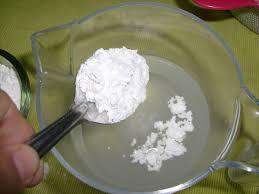The corn flour market is experiencing a notable shift as global inflation disrupts pricing dynamics and compresses profit margins across the value chain. From raw material procurement to finished product pricing, inflationary pressures have created ripple effects, compelling industry stakeholders to recalibrate strategies. Rising input costs, energy fluctuations, and supply chain instability are key contributors to this evolving scenario, placing stress on producers, retailers, and consumers alike.
Inflation has particularly intensified since the pandemic recovery period, impacting agricultural commodities, labor, transportation, and energy—all critical to the corn flour production process. These factors, individually and collectively, have resulted in volatility, with cost-push inflation challenging operational efficiency and pricing competitiveness across regional markets.
Raw Material Costs and Upstream Inflationary Trends
The cost of corn, the foundational raw material for corn flour, has witnessed erratic price movements over the last few years. Factors such as climate change, extreme weather events in key corn-producing regions, and geopolitical tensions disrupting global grain trade routes have contributed to these fluctuations. Notably, severe drought conditions in the United States and Ukraine’s ongoing export challenges have reduced global corn availability, escalating commodity prices.
This raw material inflation directly affects corn flour producers, as corn typically constitutes over 70% of the input cost structure. Without adequate hedging mechanisms or long-term supply contracts, many small and mid-sized manufacturers are forced to absorb these rising costs, reducing their profitability or passing on price increases to consumers—often with limited success in highly price-sensitive markets.
Energy and Packaging Costs Escalate Manufacturing Overheads
Beyond raw materials, energy-intensive processes such as milling, drying, and packaging have also been affected by rising fuel and electricity prices. The global energy crisis, aggravated by geopolitical uncertainties and post-COVID demand surges, has significantly increased operational expenses in corn flour processing plants. Electricity tariffs and fuel rates for logistics have driven up overhead costs, especially for plants operating on fossil energy grids in emerging economies.
Packaging materials, including plastic films and paper bags, have also become more expensive due to petrochemical price hikes and material shortages. These additional costs further strain manufacturing margins, particularly when end-product pricing is governed by competitive retail pressures and retailer-imposed price caps.
Retail Price Adjustments and Consumer Sentiment
In response to rising production and distribution costs, several corn flour brands have implemented moderate to sharp price hikes across various global regions. While premium brands with strong customer loyalty have managed to maintain demand levels, mass-market products in developing countries have seen resistance. Consumer price sensitivity remains high in staple food categories, and frequent price revisions can lead to volume declines or brand switching.
Private-label corn flour offerings, typically lower in price, have gained traction during this inflationary period. This has intensified competitive pressure on established brands, requiring them to balance pricing strategies with value addition and cost efficiency. The challenge lies in achieving sustainable profitability without alienating budget-conscious consumers.
Impact on Export Dynamics and Global Trade
Corn flour exports have also been impacted by inflation-driven pricing volatility. International buyers, especially from Africa, Southeast Asia, and Latin America, often operate on thin margins and prefer stable import prices. Frequent upward revisions in export prices—caused by higher production and logistics costs—have made many suppliers less competitive globally.
Shipping costs, which surged dramatically during and after the pandemic, have only recently begun to stabilize. Nevertheless, exporters continue to face higher insurance premiums, documentation charges, and container shortages, all of which add to the landed cost of corn flour in destination markets. For regions reliant on imports for their corn flour needs, this has translated to inflationary food prices and heightened food insecurity concerns.
Margin Management and Profitability Challenges
At the heart of inflation’s impact on the corn flour market lies the issue of margin management. As cost pressures mount from all directions—raw materials, energy, packaging, logistics—producers are forced to find creative ways to preserve profitability. However, margin erosion is common, especially for players unable to pass costs downstream due to contract constraints or competitive pricing limits.
To counteract these effects, leading manufacturers are adopting lean operational models, automation, and data-driven procurement strategies. Advanced demand forecasting, supplier diversification, and regional raw material sourcing are becoming critical tools in mitigating cost surges. Still, margin recovery remains uneven across geographies and company sizes, with small players especially vulnerable.
Strategic Responses and Forward-Looking Adaptations
Faced with persistent inflation, corn flour manufacturers are deploying both short-term and long-term responses. In the near term, companies are engaging in strategic sourcing, supplier renegotiations, and temporary price increases. Promotions and smaller pack sizes are being used to manage consumer perception and retain loyalty while adjusting per-unit pricing.
In the longer term, structural adaptations are underway. Investments in renewable energy, local sourcing, and vertically integrated supply chains are aimed at reducing exposure to inflation-sensitive elements. Additionally, some producers are moving toward value-added corn flour variants—such as organic, fortified, or ready-mix products—with higher pricing elasticity and margin buffers.
Retailers are also playing a key role in moderating inflation’s impact. Through strategic collaborations, contract farming models, and inventory planning, they are working alongside suppliers to stabilize prices while ensuring stock availability. However, the long-term success of these measures depends on continued transparency, technological investment, and inflation monitoring systems.
Conclusion: Inflation Reshaping the Corn Flour Market Landscape
Inflation is no longer a temporary disruption—it has become a structural influence reshaping the global corn flour market. Pricing strategies, profitability models, trade flows, and consumer behaviors are all evolving in response to cost pressures. While large corporations have some insulation due to scale and diversification, smaller players and emerging market participants are facing real threats to their viability.
The way forward lies in resilience-building through innovation, operational efficiency, and value chain collaboration. Inflation, while challenging, is also prompting transformation across the corn flour industry, making it more agile, data-driven, and strategically aligned with economic realities.



